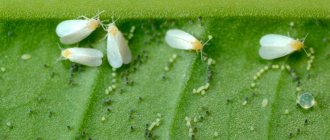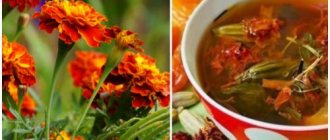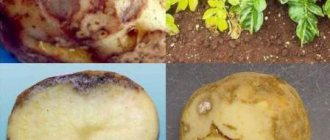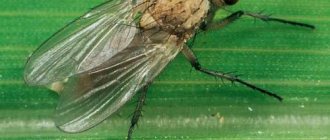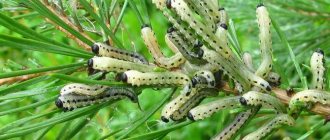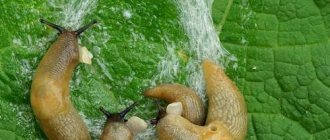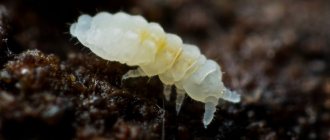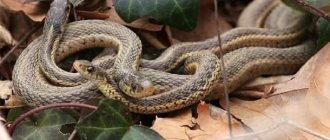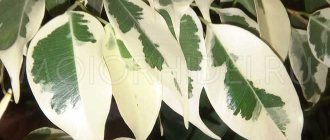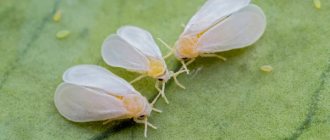Of course, houseplants are less vulnerable to disease and pests than their garden counterparts because they are usually under stricter control. But if houseplants are attacked or damaged by insects, they are more difficult to treat because green plants are more rotten, more tender, and less responsive to outside interference, especially the use of chemicals.
The wrong location (too dark, too sunny, too cold, too warm, low humidity) and improper care (too much water, too little water, wrong fertilizer, wrong substrate) can contribute to poor plant health. Poor care also contributes to the fact that pests and diseases affect indoor flowers, plants refuse to bloom, wither and eventually die.
Know your enemies by sight. Therefore, check out the photos and names of houseplant diseases and pests, causes and how to get rid of these insects and infections.
Viral
The most severe disease in terms of form and diagnosis! Primary signs are often confused with errors in care. The plant may lag behind in growth, lose its decorative appearance, the leaves become deformed and disappear. Typically, viral infections do not lead to the death of a flower: it can fight the disease for a long time and persistently. Frequent carriers of viruses are the same pests, especially aphids, whiteflies and thrips!
Mosaic disease
White, light green, or light yellow spots of various shapes appear along the veins, caused by the breakdown of the chloroplast in the leaf cells. Over time, the number of spots increases, and eventually the entire surface of the leaf plate is covered with small mosaic-like spots of different sizes and shapes.
mosaic disease
Leaf curl
The result of this virus is leaf deformation. First, convex and wrinkled areas appear, similar to swellings, then the leaf loses its shape, as if curling. Gardeners often face this problem! Thus, currant leaves are highly susceptible to curl, which is carried by insect pests.
leaf curl
Jaundice
This dangerous disease affects the crown and affects the general condition of the flower! The first symptoms are similar to chlorosis: the leaves lose their natural greenness, gradually turn yellow, become lethargic and lifeless. Jaundice causes necrosis - tissue death in the form of progressive brown spots. In addition, the stems become fragile due to an excess of starch in them! The process becomes widespread and affects young shoots and buds, and also affects flowering, discoloring the petals.
jaundice in plants
Risk group for all viruses: exotic flowering crops, callas, orchids, pelargoniums, primroses, bougainvillea, poinsettias, begonias.
Treatment
No drug can provide a 100% guarantee of recovery! At the initial stage of a viral infection, you can try to save the plant. First, place the flower in quarantine, isolating it from others! Disinfect equipment, because the virus can enter the soil with soil particles. Remove all affected parts - leaves, shoots, make anti-aging pruning, covering the sections with activated carbon.
Disinfect the soil with a weak solution of potassium permanganate in a proportion of 3 grams of potassium permanganate per 10 liters of water. Monitor the patient's condition! If the disease does not subside, you will have to part with the flower in order to avoid infecting the rest of the home collection.
Prevention
In the case of viral diseases, it is actually easier to prevent than to cure! It is enough to follow the general rules of care (you can read about important rules here): temperature regime, watering regime, avoid overwatering and, of course, protect the plant from pests; at the first sign of which, treat with fungicides. Use cuttings only from healthy plants! Feed your pets with organic matter and minerals, observing the dosage, take them out into the fresh air in the summer, and increase their immunity. After all, no virus is afraid of a healthy flower!
Important!
- Diseases of garden flowers: we continue the list.
- Traditional recipes for treating plants.
- How to get rid of pests - signs and methods of control.
Diseases and pests of indoor plants
Often in indoor floriculture we encounter the problem of plant diseases. Let's try to understand this issue in a simple, accessible way.
The main signs of a plant disease are unfavorable external changes in different parts of the plant, one or more, and the possible appearance of visible pests:
On the leaves : the appearance of spots, sticky discharge, unnatural coloring, yellowing, wilting, drying.
On the stems there are spots, lodging, softening and rotting of the stems, changes in shape, drying out and dying. As well as slow growth, falling of buds, buds, ugly development of new parts of the plant.
On the roots - an unpleasant odor from the soil, the appearance of visible movement on it, clumping of the soil, death and rotting of the roots.
The speed of development of the destructive process can be very fast - 1-7 days, or slow, for example, over the course of a year. And sometimes the disease slowly, and sometimes imperceptibly, “gains momentum” and at some point a critical moment suddenly occurs when the stem or all the leaves die off at the same time.
When a problem occurs, it is important to find the source of infection or the cause of the disease. Possible sources most often include external introduction of infection from a new plant, proximity to diseased plants, cuttings from an infected individual, from soil, through contaminated equipment. In summer, infection often occurs from the street with air flow.
All sources of plant diseases can be divided into groups:
- animal origin - insects, mites, worms;
—bacterial, viral, fungal;
- physiological - arising as a result of a deficiency of any nutritional element or resource (light, temperature, water).
At the same time, plants have their own immunity to certain diseases, which depends on the quality of maintenance, nutrition, light and water conditions, and hardening.
The main types of control and prevention of plant diseases:
1. Mechanical. Removing old and infected parts of the plant. Replacing the substrate.
2. Also partly mechanical - surfactants - soap , detergents and soaps. They very effectively remove dirt, dust, substances harmful to the plant, and reduce the number of pests. Often used together with other substances: stimulants, fertilizers, insecticides - surfactants increase adhesion, wettability, better digestibility and penetration of the substance with their help. You can use special green soap, for children, without chemicals. Additives, household, tar - in addition, tar has a powerful bactericidal effect.
3. Biological products - created on the basis of natural bacteria, natural substances, extracts from plants that are destructive to certain groups of pests. This also includes a new method of breeding insect predators that destroy pests. The most famous example is the ladybug. Other interesting species are bred on large agricultural farms.
4. Attractants – substances, essential oils, odorous substances that repel pests.
5. Chemical preparations - from one or several active ingredients, developed for a specific group of pests and diseases. In the agricultural industry, constant testing is carried out for safety, effectiveness (it can decrease over time, the pest gets used to it and does not die) and updating. Leading companies produce and package them based on these studies. It is important to use certified drugs from reputable manufacturers.
hazard class is applied to such substances ; it is indicated on the packaging:
It is important to follow the rules for working with them, hygiene measures and precautions.
Usually in plant growing they use class 4 (chemical preparations), class 5 – biological products and attractants, and rarely class 3 – for dangerous, quarantine cases. Biological products are natural toxic substances that cause illness and death in parasites, but are safe for bees, domestic animals, humans, and are suitable for processing edible plants. Attractants are odorous substances of natural origin that repel pests with a strong smell and taste. Effective attractants include citrus fruits (zest), tobacco dust, mustard, mustard cake, garlic, onions, eucalyptus, tar.
When working with any substance you must:
- observe the dosage;
— adhere to the processing time; in most cases, repeated processing is necessary after a certain period of time;
— do not allow substances to come into contact with food or utensils;
- keep children and pets away from the treated plant and containers with the working product;
— thoroughly wash the skin of your hands, face, and dishes with running water and soap after working with medications;
- if edible plants (citrus, spicy, medicinal) are processed, do not eat them until the end of the active drug’s decay period - the period is usually indicated in the annotation.
Main pests and control measures.
All diseases and pests can be divided into groups, and they can be effectively treated without going into details of the biology of each type of parasite. Although the pest group will still have to be determined based on certain characteristics.
Insect pests. This group includes both large gnawing animals - caterpillars, beetles, bark beetles, and small ones that are not always visible, but often form huge colonies - scale insects, aphids. They can also be carriers of viral and bacterial infections, which are also very dangerous for plants.
Control measures: wash the above-ground part of the plant with soap and rinse with warm water. Treatment with chemical insecticides. Insecticides are applied through the leaves (contact action, they penetrate and poison the parasite through the outer cover) and through watering (intestinal action), at the root. An effective example for today is intestinal aktar, which penetrates into the sap of the plant and makes it poisonous to pests). You can use biological insecticides - lepidocide, bitoxybacillin, verticillin, etc. When working with any drug, 2-3 times repeated treatment is necessary, with one or different substances, with an interval of 3 weeks.
Preventive measures are to isolate the infected plant and treat the area where it was located. Add mustard cake and tobacco dust to the soil surface.
The most common and persistent insect pests, their characteristics:
The control measures described above are general; below we note the important features of the most common pests.
Scale insects and false scale insects. They are often brought in with purchased plants from large stores. They love to parasitize citrus fruits, ficus trees, trees with woody stems. They form an immobile shell, under which the larvae develop. It is easy to recognize by its shell. Affected leaves and stems die.
The shell is usually attached to the bottom of the leaf near the central vein. On the stems - in places of large vessels with plant juice. The shell reliably protects from external factors, so the scale insect can be removed only through intestinal insecticides (poisons that it receives from food, from the juice of a poisoned plant). Re-treatment, control and prevention are necessary.
Thrips. Small insects. They suck juices from leaves, flowers, and fruits. Empty cells and groups of cells form white dots and spots. It spoils the decorative appearance of the plant and, with prolonged development, can lead to the death of the plant. Infection most often occurs in the summer, with air flow from the street, from garden and street plants. Treatment according to the general algorithm is usually effective. But the damaged parts of the plant will not restore their appearance.
Fools. Small white, almost transparent insects live on soil and plants and jump low. They are not dangerous for plants, but they look unpleasant and indicate a lack of watering of the plant - it is necessary to dry the soil between waterings. Check the effectiveness of drainage and water flow after watering. Destroyed by garlic infusion.
Whitefly. Small white insects with folded wings. They sit on a plant; if a branch is disturbed, they fly away en masse. One of the most difficult pests to eradicate. Most often they are a nuisance in greenhouses and greenhouses; they develop en masse at high temperatures and humidity, reducing productivity. During the off-season, the soil and premises are sanitized in greenhouses, insecticides and sulfur smoke bombs are used. During the growing season of plants, traps are hung - sticky yellow plates, onto which the pest willingly flies.
In indoor floriculture, it often affects plants with thin, tender shoots - balsams, fuchsias, but spreads to all neighboring ones. It is most effective, in addition to general control methods, to isolate such a bait plant, and also to increase the immunity of plants - harden them - with regular ventilation, feed them with stimulants to increase endurance.
Aphid. Small greenish, whitish insects that form colonies, large clusters. They usually appear in the summer, give rise to a sudden increase in numbers, and in a short time they can adhere to and destroy the plant. Control measures are effective, the main thing is to notice them in time. General preventive measures are also effective.
Mealybug. Small white insects usually form colonies in the axils of leaves, entangled in a white coating resembling cotton wool. Plants from stores and large nurseries are often infected with it. Easily removed mechanically and with intestinal insecticides.
Ticks.
These are not insects, these are more insidious and dangerous pests. They are very tenacious, their eggs can tolerate frost and heat, water and dryness, and remain for several years until favorable conditions for development and parasitism occur. Herbivorous mites are very small, when favorable conditions occur, they develop rapidly, and can completely occupy and destroy a plant in a week.
Favorable conditions for an outbreak of massive numbers of ticks are dry, hot weather. Therefore, air humidification by regular spraying, ventilation, and shading during hot hours is a very important and effective preventive measure.
Control measures: insecticides are powerless here. In the fight against ticks, a group of acaricide drugs is used. Washing the plant with a soap solution significantly reduces the number; soap can also be added to the acaricide for better contact with the plant and the pest; it acts as glue. Acaricides are chemical and biological, contact action, treatment is carried out by spraying. But often the tick gets used to any drug and becomes immune. Therefore, repeated treatments are necessary, with different drugs, after 2 weeks, 3-5 times, even if there is no new outbreak of numbers. Ticks also have natural enemies - for example, ladybugs, which is partly why in the garden, in nature, they do not give such a destructive outbreak, this is a problem in greenhouses and premises.
Usually, ticks attack a plant en masse, such as roses. In this case, it is best to isolate such a plant. For example, a rose can be placed in a closed florarium, where there will be constant high humidity, the mite will not develop there and will not spread to other plants.
There is good news. Plant parasitic mites are relatives of animal and human parasites. Therefore, anti-tick products developed to protect humans and animals are also very effective in the fight against plant parasites, and they provide long-term protection (leopard, neostomozan). The only important condition is to reduce your concentration! The working preparation recommended for animals must be diluted 4 times for plants, otherwise there will be a burn.
Spider mite. The hardiest, most harmful and widespread representative of phytomites. Forms a dirty web on the affected plants. When fighting it, it is important to treat not only the plant, but also the place where it stood. And 3-4 repeated treatments are required with an interval of 2-3 weeks, increasing air humidity.
Fungal plant diseases, mycoses.
Among the kingdom of fungi, a large group is occupied by parasites. When plants are damaged, they penetrate into the tissues, grow inside with their hyphae-threads, feeding on the juices of the plant, inhibiting it, and on the surface we already see fruiting bodies when the fungus begins to reproduce. Dark round spots, or white (for example, powdery mildew), of regular concentric shape, appear on the leaves and fruits, growing and merging into large areas, quickly oppressing the plant until it dies.
Most often, fungal diseases appear in weakened plants under unfavorable conditions. The development of mycoses is facilitated by low temperatures, drafts, excessive watering (fungi need high humidity to spread), and poor diet.
In indoor floriculture, mycoses most often affect tropical plants, the most heat-loving and delicate ones, in whose homeland there are no low temperatures - coffee, dracaenas, succulents, cacti.
Control measures: first of all, it is necessary to find the cause of the depressed state of the plant - reduce watering, remove it from drafts, place a warm mat on the windowsill under the pot, provide more light and heat. Affected parts of the plant must be removed and destroyed. The above-ground parts of the plant can be effectively treated with biological preparations - alirin, phytosporin, etc. bulbs and tubers of plants with a dormant period, seeds can be treated with the same preparations, as well as with the preparation Maxim, a solution of potassium permanganate.
Often, along with fungal diseases, the plant can also be affected by bacterial rot. In this case, you need to strip the plant down to healthy tissue, treat the cut with charcoal and fungicide. Until recovery and active growth, keep the plant in a warm, dry, bright place.
An effective preventative measure is treatment at the root or spraying with the introduction of stimulants, especially in this case with silicon content - for example, siliplant.
Physiological diseases.
This is a group of diseases that are not caused by pests and diseases, but are associated with poor nutrition and maintenance; the situation can be corrected by appropriate measures. The most common physiological problems of plants:
With a lack of light, plants lose their brightness of color, with a lack of watering, leaves and stems dry out, plants shed buds, fruits and flowers.
If there is too much watering or the pot is too large, the leaves will curl and become smaller, and the roots may rot.
When the air is dry, the leaves dry out, starting from the tips. In summer, burns on leaves and flowers are common when exposed to bright direct sun.
When there is a lack of various nutrients in the soil, various unhealthy signs that spoil the appearance of the plant also appear. Without going into professional details, you can simply replace the soil with fresh soil suitable for a given plant. Apply chelated forms of fertilizer to the leaves by spraying. Observe seasonality and dosage when fertilizing with fertilizers at the roots. Fast-growing plants require renewal and pruning.
Prevention.
When growing a home collection of indoor plants, regular disease prevention measures are very important. Basic rules of prevention:
1. Provide living conditions close to the necessary ones - maintain temperature, watering, air humidity, sufficient lighting
2. Keep plants clean - remove old, dry parts of the plant, wash, wipe or spray leaves and stems to remove dust.
3.
Apply fertilizers, fertilizing and stimulants in a timely manner, and periodically replace the top layer of soil in the pot.
4. Before using new soil, even store-bought soil, drainage, moss, and bark, carefully inspect and wash, if necessary, with biological products and soap. Calcify the soil if necessary.
5. Do not use soil after dead plants. Wash pots and flowerpots thoroughly after using soap and running water and dry.
6. Isolate new plants and cuttings from the rest for a while. Isolate diseased plants in a timely manner.
7. Apply preventive doses of attractants to the soil. If there is an increased risk of infection, slow-acting agents can be added - for example, Doctor 8 Arrows.
8. Carry out preventive watering with insecticides at the end of the warm growing season, in the fall, to prevent infection from the street.
| < Previous | Next > |
Fungal
This type of disease is the most common! Mushrooms are lower creatures that feed on plant sap, entering through mechanical damage to the above-ground parts, or through the root system, along with water or dust. Most often, mushrooms appear in places where sucking insects accumulate - aphids, whiteflies, thrips, scale insects, mealybugs! Fungi multiply quickly and occupy the surface of leaves and stems. Typically, this group of diseases manifests itself in the form of spots or plaque. What fungal diseases are indoor flowers susceptible to?
✿
Reasons for appearance
Common diseases of cacti and their own treatment
To successfully deal with the problem, you first need to determine the cause of the yellowing:
- Natural change. Many indoor plants are designed by nature to get rid of old or extra leaves: for example, when the foliage of a rose, hibiscus, or ficus dies, a new one appears in its place.
- Excess calcium. In this case, the foliage turns yellow, but remains elastic and sits firmly on the branch.
- Lack of nutrients. The soil has not been fertilized for a long time, its composition has become depleted and the plant simply has nothing to eat. Or the root system is simply cramped in a small flowerpot.
- Draft. An indoor flower can also “blow out” from a window or air conditioner - then it begins to shed yellowed leaves in large quantities.
- Problems with sunlight. Perhaps a pot with a particular flower is simply in a corner that is too dark, or too light and suffers from burns.
- Dry air. The first symptom of low humidity is that the tips begin to turn yellow.
- Overflow. When the roots of an unsuitable plant are constantly in water, rot and other diseases develop, leading not only to yellowness, but also to the death of the green pet.
- Temperature changes. Most often it occurs when a flower touches the cold glass of a window with its leaves in winter.
- Pests. Small insects, such as spider mites or scale insects, literally suck all the juices out of the plant and it loses its color.
- Diseases. These include infectious, viral or fungal diseases.
Bacterial
The symptoms of bacterial diseases are similar to fungal diseases, which makes diagnosis difficult. However, the spots in this case have blurry contours, similar to oily, glassy ones. Infection can occur through mechanical damage, through tubers, or seeds. Pets and ourselves can become carriers of bacteria! Bacteria are invisible to the eye; they enter the soil, and from there into the vascular system of the flower.
Bacterial wet rot
Bacteria cause tissue breakdown - softening and rotting! Traces of their activity look like a damp, shapeless spot. Spots can appear on trunks, roots, tubers, bulbs, but more often on leaves. To the touch, parts of the plant become soft to the touch and gradually turn into a soggy, bad-smelling mass.
Risk group : bulbous and tuberous plants.
bacterial rot
Bacterial spot, fire blight
In this case, small watery spots appear along the veins of the leaf, gradually acquiring a black color; they may be surrounded by a yellow or brown border. Small or large, they look like a burn - as if the leaf in this place was charred! Spotting affects the upper young parts of the plant.
Risk group : dangerous for all plants, but most of all for bulbous and tuberous plants.
✿
Thrips
Small, barely visible to the naked eye, sucking insects, the larvae of which develop inside the leaf tissues within 20 days. During this time, they manage to carry out their destructive work: the leaves become deformed, darken or become discolored and die.
Adult forms of the pest have a dark-colored, elongated body, are capable of flight, and leave behind a trail of silvery sticky secretions.
Adult thrips live on the undersides of leaves
Thrips are omnivorous: they attack any plant. However, most often they come from plants with large leaves: palm trees, ficus, monstera, dracaena, laurel and even Saintpaulia.
Physiological
Sometimes the cause of illness in indoor flowers is not fungi or viruses at all, but simply improper care! Some plants react quickly to errors in care, others forgive minor mistakes, but almost all flowers, if the conditions of maintenance are systematically violated, begin to get sick. Unlike the previous ones, this group of diseases is not contagious!
Dropsy
Externally, the signs of the disease look like watery pimples. The formations are usually located on the inside of the leaves, so they are not always noticeable. The reason for this phenomenon is excessive watering in low light conditions.
Risk group : hibiscus, ficus, pelargonium, peromnia, Kalanchoe, citrus fruits.
dropsy
Treatment. Unfortunately, the affected leaves cannot be restored, so they will have to be removed in the future. First of all, reduce watering, provide the plant with more diffused light, or compensate for its lack with artificial lighting. The pot must have holes and a tray so that excess moisture does not linger! Also, don't forget to put a layer of expanded clay on the bottom of the pot.
How to apply fungicides
Fungicides are necessary for the prevention and treatment of fungal infections and various rots and are divided into contact, systemic and systemic-contact. The most accessible and easiest to use are contact fungicides that protect plant tissues from infections and do not accumulate in plants: vitriol, copper and iron sulfate. Copper sulfate and quicklime are the main components of the Bordeaux mixture, which at a concentration of 1% can be used throughout the growing season. Also contact fungicides include the preparations “Abigapik”, “Hom” (copper chloride).
Systemic fungicides are able to move throughout the plant, increasing its resistance to disease, suppressing pathogens in the early stages of their development. Such drugs include “Topaz”, “Skor”, “Topsin-M”, “Fundazol”.
There are drugs with systemic contact action: “Oxychom”, “Ridomil Gold”, “Tiovit Jet”, “Raek”.
There are also a number of biologically based products (biofungicides) on the market: Fitosporin, Fitolavin, Alirin B, Gamair, Glyokladin and Trichodermin (the latter two are used mainly to suppress fungi in the soil). It has been established that pathogens of fungal diseases are able to adapt to frequently used drugs, so the drugs need to be alternated.
Illustrations for the material: Yulia Astanovitskaya, Anna Bershadskaya, Joseph Kaurov, Oksana Kapitan, Alexandra Kirillina
Types of diseases
Depending on the cause of the pathological condition, diseases are divided into several groups:
- diseases caused by unfavorable factors (endogenous). Insufficient or excessive humidity, lighting. Deficiency or excess of macro- and microelements in the soil;
- diseases caused by living organisms. These can be bacteria, fungi, insects;
- diseases caused by viruses.
It happens that damage by a pathogen occurs against the background of another, previously emerged microorganism or pest. Then therapeutic measures should be aimed at eliminating all damaging factors, including the root causes.
Why do caterpillars appear?
The main reason is the lack of proper tree care.
Caterpillar
Also, the invasion of these insects is caused by improper selection of feeding. Another reason is believed to be the pouring of reagents and a salt-sand mixture under the trees.
Basic methods of insect control
How to get rid of caterpillars in the garden?
Caterpillars in the garden
There are the following ways to combat this voracious pest:
- Physical.
- Biological.
- Chemical.
- Folk.
Each of these methods has its own advantages and disadvantages.
Physical way
Caterpillars often become prey for their natural enemies. Birds eat mainly adults. You can collect caterpillar larvae yourself.
Then they should be thrown into a container of salt water. In this environment, the larvae quickly die. Flowers and leaves damaged by insects should be collected and burned. This method cannot be called effective. It also takes a lot of time.
Chlorosis
Leaf chlorosis is a disease that occurs when there is a lack of zinc, manganese and iron in the substrate. Or due to a disrupted absorption process of these elements, mainly in soils with excessive liming.
When the disease is chlorosis, the lower leaves of plants turn yellow and die as a result (as a rule, only the leaf veins remain green). There is a slow development of all other plant organs: buds, leaves, stems, and root system.
In most cases, this plant disease is aggravated by poor drainage, high substrate moisture and a high content of nitrates in the soil mixture.
What to do if urine color changes
First you need to analyze your diet and medications. If the day before you eat a lot of beets, carrots, asparagus, a large amount of greens or food containing a variety of dyes, you should not be surprised that the toilet bowl sparkles with the colors of the rainbow. In this case, the urine itself will gradually acquire a natural color.
If there is a persistent change in color, you should consult a urologist. The specialist will prescribe tests:
- General examination of urine
, which may reveal blood cells, salts, liver pigments, protein, and bacteria. - General blood analysis
. It may reveal hemolytic anemia - anemia caused by the death of red blood cells. In this case, the concentration of hemoglobin and red blood cells drops sharply. - Blood biochemistry
. Depending on the specific symptoms, tests on the functions of the liver, kidneys, heart or other organs are prescribed. - Urine culture for flora
and sensitivity to antibiotics. The analysis reveals bacterial contamination and shows the sensitivity of microorganisms to antibacterial drugs. - PCR reaction test
used for cystitis or urethritis of infectious origin. The examination reveals even hidden infections. - Ultrasound of the pelvis, kidneys and TRUS of the prostate
reveals pathologies of the urinary tract that could cause changes in urinary color. - Ultrasound of the abdominal cavity
, which makes it possible to diagnose diseases of the liver and biliary tract, which have colored urine in a “beer” color.
Why do caterpillars appear?
The main reason is the lack of proper tree care.
Caterpillar
Also, the invasion of these insects is caused by improper selection of feeding. Another reason is believed to be the pouring of reagents and a salt-sand mixture under the trees.
Basic methods of insect control
How to get rid of caterpillars in the garden?
Caterpillars in the garden
There are the following ways to combat this voracious pest:
- Physical.
- Biological.
- Chemical.
- Folk.
Each of these methods has its own advantages and disadvantages.
Physical way
Caterpillars often become prey for their natural enemies. Birds eat mainly adults. You can collect caterpillar larvae yourself.
Then they should be thrown into a container of salt water. In this environment, the larvae quickly die. Flowers and leaves damaged by insects should be collected and burned. This method cannot be called effective. It also takes a lot of time.
Fleas (boogers)
Various small flea beetles (cruciferous, potato, light-legged, beet, etc.) are part of the family of leaf beetles and, as the name implies, actively damage the leaves of various agricultural crops, including at the seedling stage.
Both adult insects and their larvae in the leaves through holes, often before the leaf blades become skeletonized. The larvae also eat thin plant roots. When multiplying en masse, insects will completely destroy tender seedlings in just a few days.
It is necessary to fight the mediator comprehensively. In the fall, dig up the soil deeply: insects overwintering in the upper layers of the soil, once on the surface, will not survive at low temperatures.
Observe sowing dates and crop rotation. In the spring, next to the seedlings, grow plants that produce phytoncides (garlic, nasturtium, marigolds, calendula, caraway, etc.), they will repel the flea.
Kill weeds.
Dust green crops “infested” with flea beetles with a mixture of wood ash and tobacco dust (1:1), ash and slaked lime (1:1). Various infusions can also be used against the pest: tobacco, vinegar, dandelions or a decoction of potato tops.
If we are talking about chemicals, good results can be achieved with the help of Aktara, Alatar, Aliot, Karbotsin, Fufanon-Nova.
- Cruciferous flea beetles - how to fight and win
These jumping insects can ruin almost your entire cabbage and radish harvest, as well as ruin the appearance of your roses and lilies!
What does morning glory look like in a flower pot?
The liana is characterized by rapid growth, unpretentiousness in cultivation, and shade tolerance. All these qualities make the plant indispensable for decorating walls, imitating hedges, and hiding possible defects.
Morning glory looks great in pots, flowerpots, floor vases and containers. Mobile containers are mobile and, if necessary, can be easily moved to a new location.
Important! The flower does not like transplants, so it is better to sow the seeds immediately in a flowerpot. Considering that the vine grows strongly, the pot should be at least 2.5-3 liters per plant
When growing morning glory in containers, seeds should be planted at a distance of 25-30 cm. The flower is unpretentious to the quality of the soil, but prefers light, loose, non-acidic soils
Considering that the vine grows strongly, the pot should be at least 2.5-3 liters per plant. When growing morning glory in containers, seeds should be planted at a distance of 25-30 cm. The flower is unpretentious to the quality of the soil, but prefers light, loose, non-acidic soil.
Many types and varieties of flowers are valuable due to the original color of the foliage
If desired, you can grow the plant through seedlings. Young seedlings should be transferred with a clod of earth to a permanent place, being careful not to damage the root system.
Before sowing, the seeds are soaked for a day. Sowing should be done depending on weather conditions, given that the plant does not tolerate frost. The critical temperature for morning glory is 2-4 ºС.
To prevent the plant from stretching when the fourth true leaf appears, the seedling must be pinched.
The plant easily tolerates lack of moisture, but loves watering. You need to make sure that there is no stagnation of water in the pots or tray.
Important! When planting in decorative containers, care must be taken to ensure there are drainage holes. Morning glory always grows in a vertical direction
To form a plant in an ampel form, you need to install special supports or frames to force the shoots to grow in the right direction. The frames are made from bamboo sticks in the form of a wigwam or metal frames are used with a circle at a height of 20-30 cm above the plant. The flower wraps around the frame, the main shoot stops growing, and the side shoots begin to grow in the horizontal direction, creating the correct shape of the hanging plant
Morning glory always grows in a vertical direction. To form a plant in an ampel form, you need to install special supports or frames to force the shoots to grow in the right direction. The frames are made from bamboo sticks in the form of a wigwam or metal frames are used with a circle at a height of 20-30 cm above the plant. The flower wraps around the frame, the main shoot stops growing, and the side shoots begin to grow in a horizontal direction, creating the correct shape of an ampelous plant.
Morning glory fits picturesquely into compositions with abundantly flowering ampelous plants: petunia, fuchsia, surfinia, bacopa
For vertical gardening, plastic trellises or nets are used. With the help of a fast-growing vine, you can grow a beautiful backdrop in a month.
The flower is responsive to fertilization. For more luxuriant flowering, fertilizing should contain a minimum of nitrogen. If the plant is grown for decorative foliage, it should be fed with complex mineral fertilizer. Caring for the plant is simple; any novice gardener can grow morning glory.
Ways to combat caterpillars
- Soap-ash solution. In order to prevent the appearance of caterpillars, you should treat the beds with a tincture of ash and soap, and it also works very effectively if the insects have already appeared. To prepare, take a half-liter jar filled with vegetable or stove ash, add 40 grams of tar soap shavings or 40 ml of the same shampoo. The natural insecticide is infused for a day, after which the solution must be filtered and treated with it on the plants. It is recommended to repeat the procedure at the beginning of the growing season, after 14 days from the moment the cabbage was planted in open ground, and then every 2 weeks.
- Are you wondering how to get rid of cabbage caterpillars? An excellent way to combat these insects is an infusion or decoction of tobacco dust. You need to take 40 grams of tobacco or shag dust, add a liter of clean water and leave for 2 days. After the solution has infused, it must be filtered and 2 liters of water added. Immediately before spraying, 4 grams of pureed soap are added to the infusion. A decoction of tobacco dust is prepared in the same proportions, only it needs to be infused for a day, and then boiled for two hours. Before application, the decoction must be diluted with water and soap added.
